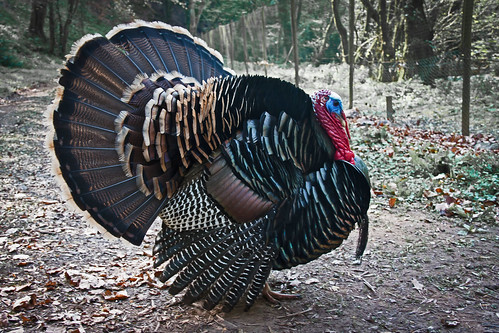Courtesy of National Army Museum, London
As people in the US prepare to line up at movie theaters to see War Horse over the Christmas holiday, here's some farrier background about a tool you may even see in the movie. I am not sure when they stopped actually using this tool, but no one has stopped talking about it, that's for sure.
It's the farrier's ax, and you'll see one close-up in this video from the National Army Museum, which currently has a major museum dedicated to war horses staged at its London galleries.
The Hoof Blog had plenty of information about the ax when the Royal Wedding took place last spring and a farrier's ax was paraded by the Household Cavalry farrier in the procession.
| This is the ax of the Royal Horse Guards' farrier, courtesy of http://householdcavalry.info/ |
The ax, as the video says, served two purposes: the spike was used to mercifully end a horse's suffering. The sharp blade was used to hack off one of the horse's hooves. The farriers returned from the battlefield with the severed hooves, which would be counted and analyzed. Each hoof was burned with inventory numbers that told the quartermaster department a lot about the horse that had died--was it an artillery horse? a cavalry mount? a mule?--and what would be needed to replace it.
| Something you don't see anymore: these antique hoof guards, worn for decoration, were probably from India. They are on display at the National Army Museum in London for the War Horse exhibit. |
The history books state that the burned numbers in the hooves not only helped keep track of horses killed in battle; they prevented a soldier from selling his horse to civilians in war zones. They were desperate for transportation or (perhaps) food.
Their farrier also still parades with his regiment through the streets of London--and carries his ax wherever he goes.
| Here are the hind hooves of the famous War Horse puppets in the stage play in London. The play is also on Broadway. (Geoff Marston photo) |
| Even a puppet War Horse needs a farrier--and who better than England's David Gulley? Mr. Gulley, who is from Leicestershire, was on-stage in London's West End with the War Horse cast and he had to check out what was on the bottom of Joey's front foot. David, an ex-military farrier, saw the play with a group of veterans recently. Luckily he wasn't carrying an ax. (Geoff Marston photo) |
TO LEARN MORE
Why Is That Guy Following Prince William and Kate Middleton Carrying a Big Shiny Ax? Because He's the Farrier, That's Why! (farriers at the 2011 Royal Wedding in London)David Gulley Elected President of European Federation of Farrier Associations
© Fran Jurga and Hoofcare Publishing; Fran Jurga's Hoof Blog is a between-issues news service for subscribers to Hoofcare and Lameness Journal. Please, no use without permission. You only need to ask. This blog may be read online at the blog page, checked via RSS feed, or received via a digest-type email (requires signup in box at top right of blog page). To subscribe to Hoofcare and Lameness (the journal), please visit the main site, www.hoofcare.com, where many educational products and media related to equine lameness and hoof science can be found. Questions or problems with this blog? Send email to blog@hoofcare.com.
Follow Hoofcare + Lameness on Twitter: @HoofcareJournal
Read the Facebook news feed when you "like" the Hoofcare + Lameness Facebook Page
Disclosure of Material Connection: I have not received any direct compensation for writing this post. I have no material connection to the brands, products, or services that I have mentioned, other than Hoofcare Publishing. I am disclosing this in accordance with the Federal Trade Commission’s 16 CFR, Part 255: Guides Concerning the Use of Endorsements and Testimonials in Advertising.















